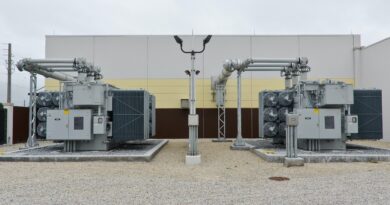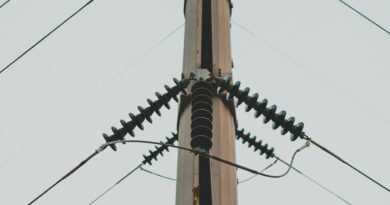The Ultimate Guide to Effective Electrical Safety Inspections in Faridabad
Introduction
Electrical safety is of paramount importance in both residential and commercial settings. Faridabad, a bustling city in India, is no exception to the need for rigorous electrical safety inspections. In this comprehensive guide, we will explore the key aspects of conducting effective electrical safety inspections in Faridabad. From understanding the importance of electrical safety to conducting thorough inspections, this guide will equip you with the knowledge and insights needed to ensure the safety and well-being of your property and its occupants.
Table of Contents
- Importance of Electrical Safety Inspections
- Understanding Electrical Hazards
- Preparing for an Electrical Safety Inspection
- Conducting a Visual Inspection
- Testing Electrical Systems and Equipment
- Identifying and Addressing Potential Issues
- Ensuring Compliance with Electrical Codes and Standards
- Maintaining Proper Documentation
- Hiring a Professional Electrical Inspector
- Common Electrical Safety Violations
- Frequently Asked Questions (FAQs)
- Conclusion
1. Importance of Electrical Safety Inspections
1.1 Enhancing Safety and Preventing Accidents
Electrical safety inspections play a vital role in identifying potential hazards and preventing electrical accidents. By proactively assessing electrical systems and equipment, you can detect issues early on and take corrective measures to eliminate or minimize risks.
1.2 Compliance with Regulations
Conducting regular electrical safety inspections ensures compliance with local and national regulations, codes, and standards. Compliance is not only necessary to meet legal requirements but also to uphold the well-being of individuals and properties.
2. Understanding Electrical Hazards
2.1 Electrical Shock and Electrocution
Electricity poses a significant risk of electric shock and electrocution. These hazards can result from direct contact with live electrical components or indirect contact through conductive materials or faulty equipment.
2.2 Fire and Property Damage
Electrical faults can lead to fires, causing extensive property damage, financial loss, and even loss of life. Faulty wiring, overloaded circuits, and malfunctioning electrical equipment are common causes of electrical fires.
3. Preparing for an Electrical Safety Inspection
3.1 Gathering Relevant Documentation
Before an electrical safety inspection, gather all relevant documentation, including electrical plans, installation records, maintenance logs, and previous inspection reports. These records provide valuable insights into the history and condition of your electrical systems.
3.2 Notifying Occupants
Inform occupants and stakeholders about the upcoming inspection to ensure their cooperation and minimal disruption during the process. Clear communication helps create a safe and conducive environment for the inspection.
4. Conducting a Visual Inspection
4.1 Assessing General Electrical Conditions
Begin the inspection by evaluating the general electrical conditions, including the state of electrical panels, wiring, switches, outlets, and lighting fixtures. Look for signs of damage, wear, improper installations, or exposed wiring.
4.2 Identifying Potential Safety Hazards
During the visual inspection, be vigilant in identifying potential safety hazards such as frayed wires, loose connections, outdated equipment, and insufficient grounding. These hazards need immediate attention to prevent accidents.
5. Testing Electrical Systems and Equipment
5.1 Checking Voltage and Current Levels
Measure voltage and current levels to ensure they are within the acceptable range. Abnormal readings may indicate underlying issues such as overloaded circuits, faulty breakers, or inadequate power supply.
5.2 Verifying Grounding and Bonding
Proper grounding and bonding are essential for electrical safety. Test grounding systems to verify their effectiveness and identify any faults that may compromise safety.
6. Identifying and Addressing Potential Issues
6.1 Prioritizing Repairs and Replacements
Based on the inspection findings, prioritize necessary repairs and replacements. Address critical issues promptly to eliminate immediate risks, and schedule non-urgent repairs for a later date.
6.2 Updating Outdated Electrical Systems
Outdated electrical systems may not meet current safety standards. Consider upgrading your systems to enhance safety, improve energy efficiency, and comply with the latest electrical codes.
7. Ensuring Compliance with Electrical Codes and Standards
7.1 Staying Up-to-Date with Regulations
Stay informed about the latest electrical codes and standards applicable to Faridabad. Regularly review and update your electrical systems to ensure compliance and minimize safety risks.
7.2 Engaging Certified Electricians
Engage certified electricians who have a thorough understanding of local regulations and can ensure your electrical systems meet the necessary standards. Their expertise can help you avoid violations and ensure the safety of your property.
8. Maintaining Proper Documentation
8.1 Documenting Inspection Findings
Maintain accurate records of the inspection findings, including observations, repairs, and recommendations. This documentation serves as a reference for future inspections, helps track progress, and demonstrates compliance.
8.2 Creating a Maintenance Schedule
Develop a regular maintenance schedule to address routine tasks such as cleaning, testing, and servicing electrical systems and equipment. Scheduled maintenance reduces the likelihood of unexpected failures and ensures long-term safety.
9. Hiring a Professional Electrical Inspector
9.1 Benefits of Professional Inspections
Consider hiring a professional electrical inspector to conduct thorough and unbiased inspections. Their expertise, experience, and specialized tools can provide a comprehensive assessment of your electrical systems.
9.2 Selecting a Qualified Electrical Inspector
When choosing an electrical inspector, verify their qualifications, certifications, and relevant experience. Seek recommendations and reviews to ensure you engage a competent and reliable professional.
10. Common Electrical Safety Violations
10.1 Overloaded Circuits and Extension Cords
Overloading circuits and relying excessively on extension cords are common violations that increase the risk of electrical fires and accidents. Ensure circuits are properly rated, and minimize the use of extension cords.
10.2 Inadequate Grounding
Improper grounding can result in electric shocks and equipment damage. Ensure all electrical systems and equipment are correctly grounded to maintain electrical safety.
Frequently Asked Questions (FAQs)
Q1: How often should electrical safety inspections be conducted?
A1: Electrical safety inspections should be conducted at least once every few years for residential properties and more frequently for commercial properties, depending on their size and usage.
Q2: Can I perform electrical safety inspections myself?
A2: While basic visual inspections can be done by property owners, it is recommended to hire a professional electrical inspector for thorough and accurate assessments.
Q3: What should I do if I identify electrical hazards during an inspection?
A3: If you identify electrical hazards during an inspection, it is essential to take immediate action to eliminate or mitigate the risks. Consult a licensed electrician for repairs or replacements.
Q4: Are electrical safety inspections only necessary for older properties?
A4: No, electrical safety inspections are important for all properties, regardless of their age. Even newer properties can have faulty installations or equipment that pose safety risks.
Q5: What are the consequences of non-compliance with electrical codes?
A5: Non-compliance with electrical codes can result in penalties, legal liabilities, and increased risks to life and property. It is crucial
to adhere to the electrical codes and standards to ensure the safety of your property and occupants.
Conclusion
Effective electrical safety inspections are essential for maintaining a safe and secure environment in Faridabad. By understanding the importance of electrical safety, preparing for inspections, conducting thorough assessments, and addressing potential issues, you can mitigate electrical hazards and prevent accidents. Remember to stay updated with regulations, engage qualified professionals, and maintain proper documentation to ensure ongoing compliance and safety.
Investing in regular electrical safety inspections not only protects lives and property but also promotes peace of mind for residents and stakeholders. By proactively identifying and addressing electrical hazards, you contribute to a safer and more sustainable Faridabad.
Frequently Asked Questions (FAQs)
Q1: How can I book an electrical safety inspection in Faridabad?
A1: To book an electrical safety inspection in Faridabad, you can reach out to licensed electrical inspection services in the area. They will guide you through the process and schedule an appointment for the inspection.
Q2: What are some common signs of electrical problems that should prompt an inspection?
A2: Signs of electrical problems include frequent circuit breaker tripping, flickering lights, burning smells, hot outlets or switches, and buzzing sounds. If you notice any of these signs, it is recommended to schedule an electrical safety inspection.
Q3: Can an electrical safety inspection help reduce energy consumption?
A3: Yes, an electrical safety inspection can identify inefficiencies in your electrical systems that contribute to higher energy consumption. By addressing these issues, you can improve energy efficiency and potentially reduce utility costs.
Q4: Are there any government incentives for conducting electrical safety inspections?
A4: Depending on your location, there may be government incentives or programs that promote electrical safety inspections. Check with local authorities or energy efficiency agencies to explore potential incentives or rebates.
Q5: Is it necessary to shut down the power during an electrical safety inspection?
A5: In most cases, it is not necessary to shut down the power for a visual inspection. However, for certain tests or assessments, the inspector may require temporary power shutdowns to ensure safety during the inspection process.




